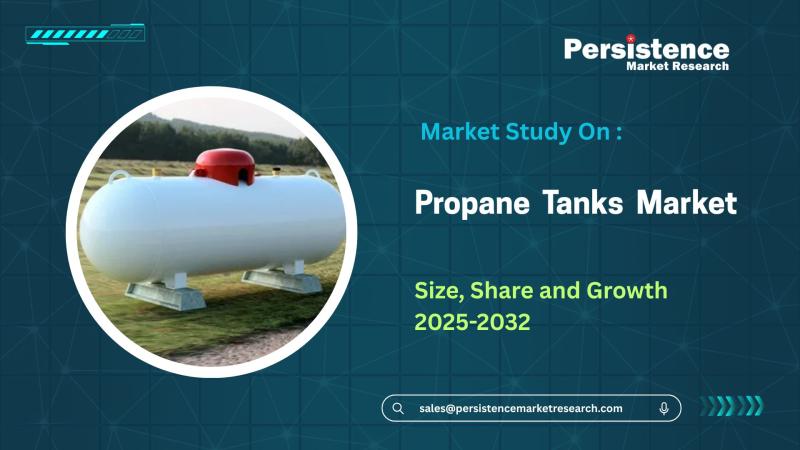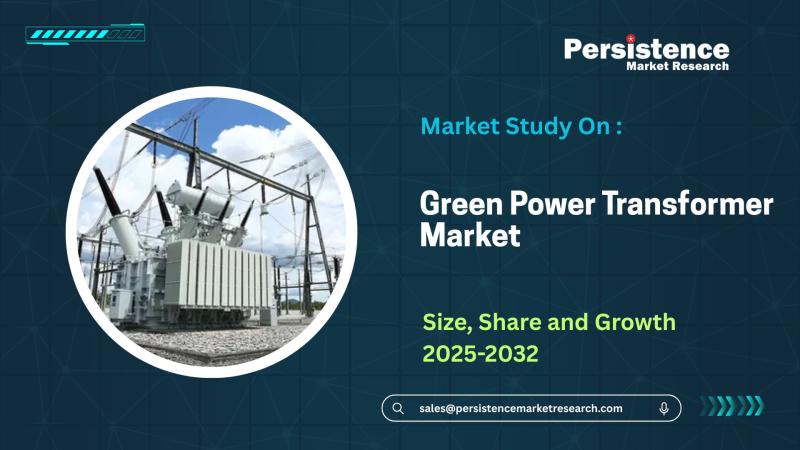Press release
Postoperative Pain Management Market Accelerates Toward US$65.22 Bn with 5.4% CAGR, Reports Persistence Market Research
The postoperative pain management market has emerged as a pivotal component of global healthcare, driven by rising surgical procedure volumes, aging populations, and the heightened need for safe, effective, and long-acting analgesics. The global market is projected to be valued at US$ 45.13 billion in 2025 and is expected to reach US$ 65.22 billion by 2032, expanding at a steady CAGR of 5.4% throughout the forecast period. As hospitals intensify their focus on patient satisfaction and recovery optimization, pain management has shifted from a supportive function to a central element in postoperative care pathways. Enhanced recovery after surgery (ERAS) protocols, increased investment in pain research, and the shift toward multimodal therapies are strengthening the industry's trajectory.The market's growth is predominantly driven by the rise in orthopedic, cardiovascular, cosmetic, and minimally invasive surgeries performed globally. Post-pandemic recovery has brought back elective procedures at an accelerated pace, while the prevalence of age-associated diseases and delayed recovery rates among elderly populations continue to support demand for postoperative pain solutions. Opioids remain the leading drug segment, accounting for an estimated 62% market share in 2025, given their potent efficacy, although the global move toward safer alternatives continues. Meanwhile, North America is expected to dominate the market with 46% share in 2025, supported by a strong drug pipeline, advancements in regulatory approvals, and robust healthcare infrastructure facilitating swift adoption of novel analgesics.
Get a Sample Copy of Research Report (Use Corporate Mail id for Quick Response): https://www.persistencemarketresearch.com/samples/24259
Key Highlights of the Report
• Emphasis on patient satisfaction and hospital performance is accelerating adoption of enhanced pain protocols.
• Minimally invasive surgeries are increasing demand for targeted and procedure-specific pain management solutions.
• Multimodal analgesia is becoming the preferred standard due to improved efficacy and safety profiles.
• Digital health technologies are transforming postoperative pain monitoring and medication adherence.
• Oral route of administration is estimated to secure 38% share in 2025, driven by prescription advancements.
• Opioids are projected to account for 62% of drug-based market share in 2025 due to their proven effectiveness.
Market Segmentation
The postoperative pain management market is segmented across a wide array of product types, drug classes, routes of administration, and end-user categories, reflecting the diversity of pain management approaches tailored to patients' clinical needs. Drug type segmentation includes opioids, non-opioids, NSAIDs, local anesthetics, and long-acting formulations. Opioids dominate the landscape, though newer non-opioid analgesics and extended-release anesthetics are gaining importance as healthcare systems aim to reduce opioid-related risks. Local anesthetics and evolving nerve-block technologies are also solidifying their place within multimodal protocols.
Based on route of administration, the market is divided into oral, intravenous, topical, transdermal, and spinal or epidural routes. The oral route continues to lead, expected to account for 38% of the market in 2025, owing to its convenience, minimal invasiveness, and high patient compliance. Oral formulations are frequently used for prolonged recovery phases after hospital discharge, supporting their widespread adoption. Intravenous administration maintains its relevance in hospitals for immediate postoperative care, particularly in major surgeries.
End-user segmentation reveals that hospitals constitute the dominant category, supported by their extensive surgical caseloads and ability to provide comprehensive, immediate postoperative support. Hospital pharmacies play a major role, expected to account for 63.4% share of postoperative pain medication distribution in 2025, thanks to their centralized control over high-risk drug dispensing and collaboration with clinical teams. Ambulatory surgical centers and specialty clinics are also emerging as significant end-users, particularly as minimally invasive and day-care procedures rise globally.
Read Detailed Analysis: https://www.persistencemarketresearch.com/market-research/postoperative-pain-management-market.asp
Regional Insights
The postoperative pain management market displays strong regional variations shaped by healthcare infrastructure, regulatory environments, surgical volumes, and patient access to advanced therapeutics. North America stands at the forefront, projected to hold a 46% market share in 2025, driven by advanced healthcare facilities, favorable reimbursement frameworks, and a strong pipeline of FDA-approved analgesics such as OLINVYK, Zynrelef, and the newly authorized Journavx. The U.S. continues transitioning toward safer, non-opioid alternatives, a trend strengthened by past opioid misuse concerns and ongoing public health initiatives that encourage balanced pain treatment strategies.
Europe maintains a robust market position supported by extensive palliative care networks, high adoption of ERAS protocols, and patient demand for non-opioid medications. Regulatory support for safer analgesics and stringent prescribing frameworks have pushed healthcare systems to prioritize multimodal and non-pharmacological methods. Germany, the U.K., France, and the Nordic countries lead the region in deploying advanced pain control techniques.
Asia Pacific is the fastest-growing region, estimated to capture 28.7% of market share in 2025 with a strong CAGR of 7.4% through 2032. Rapid expansion in healthcare infrastructure, rising surgical volumes in India and China, and government investments in innovation contribute significantly to market growth. The launch of sustained-release formulations and long-acting analgesics, including Hisamitsu Pharmaceutical's transdermal patches, boosts the regional market. Furthermore, increasing medical tourism in countries like Thailand, Singapore, and Malaysia adds to demand for postoperative pain relief solutions.
Latin America and the Middle East & Africa show steady growth driven by improvements in hospital capacities, growing orthopedic and cancer surgeries, and better availability of prescription analgesics. However, varying reimbursement and drug affordability issues continue to shape adoption patterns in these regions.
Market Drivers
The primary driver fueling the postoperative pain management market is the rapid rise in surgical interventions worldwide. With aging populations, increasing orthopedic and cardiovascular surgeries, and a sharp return of elective procedures post-pandemic, the demand for effective postoperative pain protocols has never been higher. For example, the American Society of Plastic Surgeons reported more than 17.7 million cosmetic procedures in 2022, many of which require comprehensive pain management. Oncology surgeries, trauma surgeries, and pediatric operations also continue to contribute to the growing need for optimized pain solutions.
The industry is also experiencing momentum from heightened attention to patient-centered care and quality-of-life improvements following surgery. Regulatory endorsements of novel analgesics-including FDA approvals of OLINVYK, Zynrelef, and Journavx-are enabling innovation and providing healthcare providers with safer options. The increased integration of palliative care approaches, blending non-pharmacological methods with pharmacological therapies, further enhances recovery outcomes. Rising investments from leading pharmaceutical companies such as Pfizer, AbbVie, and Johnson & Johnson continue to support research in non-opioid, long-acting, and personalized pain therapies.
Market Restraints
Despite promising growth, the postoperative pain management market faces challenges related to rising global concerns over opioid misuse and adverse effects. The widespread overprescription of opioids-evident from the 191 million opioid prescriptions issued in the U.S. in 2017-has intensified measures to reduce opioid dependency. Side effects including respiratory depression, addiction, and cognitive impairment have ushered in more stringent prescribing guidelines, which can limit the use of traditional opioid-based medications during postoperative recovery. Regulatory pressures and prescriber hesitancy are reshaping prescribing patterns, pushing hospitals to adopt alternative analgesics and multimodal approaches.
Another constraint is the variability in healthcare accessibility across emerging regions. High costs of advanced analgesics and limited availability of non-opioid alternatives hinder wider adoption in low-income countries. Additionally, workforce shortages in pain management specialists, anesthesiologists, and palliative care practitioners create treatment gaps. Concerns over adverse drug interactions, especially in multimorbid elderly populations, also complicate pain therapy decision-making.
Market Opportunities
The shift toward personalized medicine presents significant opportunities for the postoperative pain management landscape. Pharmacogenomics, which evaluates how individual genetic differences influence drug responses, is enabling more precise and tailored analgesic regimens. A 2024 study published in The Journal of Pain demonstrated that pharmacogenomic-guided therapy reduced opioid use by 25% while improving patient recovery. As institutions such as Cleveland Clinic integrate genetic testing into postoperative protocols, precision-based pain management is poised to become widespread.
Another lucrative opportunity lies in the expansion of hospital pharmacy capabilities. With hospital pharmacies controlling 63.4% of postoperative pain medication distribution in 2025, their ability to manage high-risk opioid inventories, maintain stock for emergency procedures, and collaborate on patient-specific treatment pathways enhances market potential. Digital health innovations-like remote pain monitoring apps, augmented reality imaging tools, and telemedicine-also open avenues for improved postoperative follow-up and medication adherence, supporting more efficient care coordination.
Request for Customization of the Research Report: https://www.persistencemarketresearch.com/request-customization/24259
Company Insights
• Teva Pharmaceutical Industries Ltd
• Novartis AG
• Allergan plc
• GlaxoSmithKline plc
• Mylan N.V.
• Johnson & Johnson
• Pfizer Inc.
• Purdue Pharma L.P
• Janssen Pharmaceuticals, Inc
• Endo International plc
• Baxter International
• Pacira Pharmaceuticals Inc.
• Cadila Healthcare Limited
• Cipla Limited
• Eisan
• LG Chem
• AbbVie Inc.
• Amgen Inc.
• Sun Pharmaceutical Ltd.
Postoperative Pain Management Market Segmentation
By Drug
Opioids
Oxycodone
Hydrocodone
Other Opioids
NSAIDs
Local Anesthetics
Acetaminophen
By Route of Administration
Injectable
Oral
Rectal
Topical
Transdermal
Others
By Prescription Type
Over-the-counter (OTC) Products
Prescription Drugs
By Distribution Channel
Hospital Pharmacies
Specialty Clinics
Long Term Care Centers
Retail Pharmacies
Drug Stores
Online Pharmacies
By Region
North America
Europe
East Asia
South Asia and Oceania
Latin America
Middle East and Africa
Recent Industry Developments
In June 2025, UT Health San Antonio became the first medical center in Texas to administer suzetrigine (Journavx), a newly FDA-approved non-opioid analgesic, as part of a multimodal, opioid-free postoperative recovery protocol.
In April 2024, Baxter International introduced five injectable medications in the United States, enhancing hospital access to essential postoperative pain and anesthesia-related drugs and broadening its pharmaceutical portfolio.
Conclusion
The postoperative pain management market is advancing steadily as healthcare systems prioritize comprehensive, safe, and patient-focused postoperative recovery strategies. As surgical volumes expand, aging demographics shape treatment needs, and innovation accelerates, the sector is positioned for sustained growth. The shift toward multimodal therapies, non-opioid alternatives, and personalized medicine will define the next phase of market evolution. With strong regulatory support, ongoing R&D investments, and the emergence of advanced drug delivery technologies, the postoperative pain management industry is set to play an increasingly influential role in global healthcare outcomes through 2032 and beyond.
Read More Related Reports:
Pharmacy Benefit Manager Market https://www.persistencemarketresearch.com/market-research/pharmacy-benefit-manager-market.asp
Cushings Syndrome and Acromegaly Treatment Market https://www.persistencemarketresearch.com/market-research/cushings-syndrome-and-acromegaly-treatment-market.asp
Metagenomics Market https://www.persistencemarketresearch.com/market-research/metagenomics-market.asp
Psoriasis Drugs Market https://www.persistencemarketresearch.com/market-research/psoriasis-drugs-market.asp
Contact Us:
Persistence Market Research
Second Floor, 150 Fleet Street, London, EC4A 2DQ, United Kingdom
USA Phone: +1 646-878-6329
UK Phone: +44 203-837-5656
Email: sales@persistencemarketresearch.com
Web: https://www.persistencemarketresearch.com
About Persistence Market Research:
At Persistence Market Research, we specialize in creating research studies that serve as strategic tools for driving business growth. Established as a proprietary firm in 2012, we have evolved into a registered company in England and Wales in 2023 under the name Persistence Research & Consultancy Services Ltd. With a solid foundation, we have completed over 3600 custom and syndicate market research projects, and delivered more than 2700 projects for other leading market research companies' clients.
Our approach combines traditional market research methods with modern tools to offer comprehensive research solutions. With a decade of experience, we pride ourselves on deriving actionable insights from data to help businesses stay ahead of the competition. Our client base spans multinational corporations, leading consulting firms, investment funds, and government departments. A significant portion of our sales comes from repeat clients, a testament to the value and trust we've built over the years.
This release was published on openPR.
Permanent link to this press release:
Copy
Please set a link in the press area of your homepage to this press release on openPR. openPR disclaims liability for any content contained in this release.
You can edit or delete your press release Postoperative Pain Management Market Accelerates Toward US$65.22 Bn with 5.4% CAGR, Reports Persistence Market Research here
News-ID: 4272502 • Views: …
More Releases from Persistence Market Research

Packaging Market Value to Rise from US$1.1 Trillion in 2025 to US$1.5 Trillion b …
The global packaging market is undergoing a phase of rapid transformation driven by evolving consumer expectations, expanding retail networks, and increasing emphasis on product safety, sustainability, and convenience. Packaging is no longer seen merely as a protective layer around a product. Instead, it has become a core component of brand identity, product differentiation, and supply chain efficiency. With fast moving consumer goods brands expanding globally and ecommerce platforms heavily depending…

High Barrier Packaging Films Market Growth Forecast 2025 to 2032 Reaching US dol …
The global high barrier packaging films market has grown into one of the most critical components of modern food protection, pharmaceutical safety, and specialty industrial packaging. These films are engineered to shield products from oxygen, moisture, light, aroma loss, contamination, and physical damage. As global consumption patterns shift toward packaged, premium, and convenience oriented goods, the demand for advanced protective films has accelerated rapidly. Manufacturers across regions now rely on…

Propane Tanks Market Valued at US$82.3 Billion in 2024 Set to Hit US$109.8 Billi …
The global propane tanks market is undergoing steady and measurable expansion as industries and households increasingly adopt propane as a reliable, efficient, and clean burning energy source. The market landscape is shaped by rising demand for energy storage solutions, growing outdoor recreational activities, expanding commercial consumption, and strong adoption of propane powered systems for residential heating, cooking, and backup power generation. Propane tanks are used extensively in agriculture, manufacturing, construction,…

Green Power Transformer Market Set to Grow from US$ 1.3 Billion in 2025 to US$ 2 …
The global green power transformer market is experiencing accelerated momentum as global economies shift toward cleaner, more resilient, and more efficient electricity systems. Green power transformers are advanced electrical transformers engineered to minimize losses, reduce emissions, and improve overall energy efficiency. They serve as a critical backbone for renewable energy infrastructure by enabling safe and efficient integration of wind, solar, hydro, and other green power sources into transmission and distribution…
More Releases for Pharma
Miglitol Market Size, Share and Forecast By Key Players-Weiao Pharma, Zhejiang M …
𝐔𝐒𝐀, 𝐍𝐞𝐰 𝐉𝐞𝐫𝐬𝐞𝐲- According to the MRI Team's Market Research Intellect, the global Miglitol market is anticipated to grow at a compound annual growth rate (CAGR) of 11.49% between 2024 and 2031. The market is expected to grow to USD 22.32 Billion by 2024. The valuation is expected to reach USD 47.79 Billion by 2031.
The Miglitol market is experiencing significant growth due to the rising prevalence of diabetes and the increasing awareness of the…
Dacarbazine Market Size, Share and Forecast By Key Players-Lingnan Pharma, Ruiyi …
𝐔𝐒𝐀, 𝐍𝐞𝐰 𝐉𝐞𝐫𝐬𝐞𝐲- According to the MRI Team's Market Research Intellect, the global Dacarbazine market is anticipated to grow at a compound annual growth rate (CAGR) of 14.63% between 2024 and 2031. The market is expected to grow to USD 25.32 Billion by 2024. The valuation is expected to reach USD 65.84 Billion by 2031.
The Dacarbazine market is projected to witness significant growth in the coming years, driven by increasing…
Dacarbazine Market Size, Share and Forecast By Key Players-Lingnan Pharma, Ruiyi …
𝐔𝐒𝐀, 𝐍𝐞𝐰 𝐉𝐞𝐫𝐬𝐞𝐲- According to the MRI Team's Market Research Intellect, the global Dacarbazine market is anticipated to grow at a compound annual growth rate (CAGR) of 14.63% between 2024 and 2031. The market is expected to grow to USD 25.32 Billion by 2024. The valuation is expected to reach USD 65.84 Billion by 2031.
The dacarbazine market is experiencing steady growth, driven by the rising incidence of cancer globally. As…
Epilepsy Pipeline Assessment 2024: Therapies, Clinical Trials, and Market Insigh …
(Las Vegas, Nevada, United States) As per DelveInsight's assessment, globally, Epilepsy pipeline constitutes 75+ key companies continuously working towards developing 90+ Epilepsy treatment therapies, analysis of Clinical Trials, Therapies, Mechanism of Action, Route of Administration, and Developments analyzes DelveInsight.
The Epilepsy Pipeline report embraces in-depth commercial and clinical assessment of the pipeline products from the pre-clinical developmental phase to the marketed phase. The report also covers a detailed description of the…
Global Indomethacin Market Seeking Excellent Growth by 2028 | Ratiopharm, Merck, …
"IBI has published a report entitled Global Indomethacin Market Research Report which provides comprehensive data on emerging trends, market drivers, growth opportunities, and barriers that could change the dynamics of the industry market. It provides an in-depth analysis of market segments which includes the product, application, and competitor analysis.
Click Here To Order A Sample Copy Of Indomethacin Global Market Report : https://www.infinitybusinessinsights.com/request_sample.php?id=380382
The Indomethacin Global Market Research Report provides close monitoring…
Roxatidine Market 2020: Top Companies Analysis To Grow Healthcare Business by 20 …
Business Industry Reports Research has recently announced a report on Global Roxatidine Market based on the Category Industry. The Roxatidine Market report emphasizes various key aspects, which include growth drivers, restraints, opportunities and recent market trends for the forecast period 2020-2024.
Global Roxatidine Market overview:
Business Industry Reports Analyst covers the Major Players data, including: shipment, revenue, gross profit, interview record, business distribution etc., these data help the consumer know about the…
